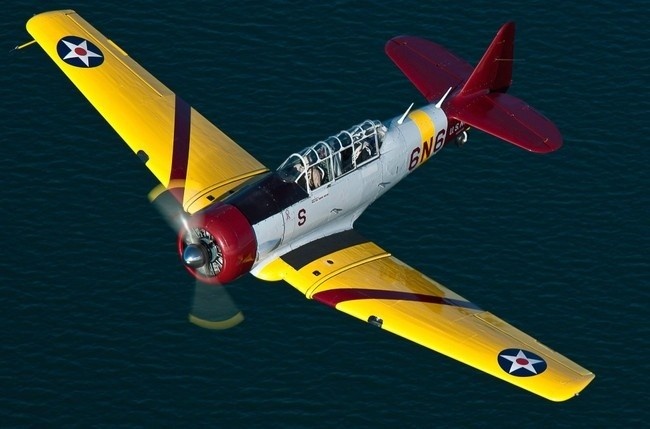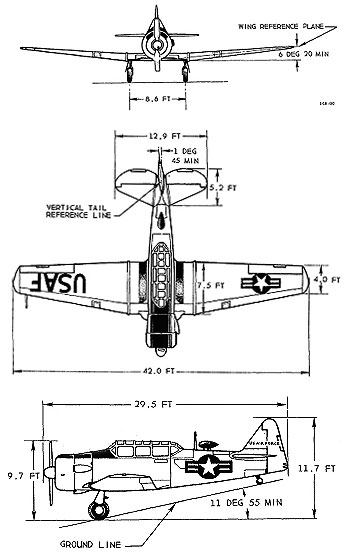The SNJ was known as the “Pilot Maker"

The SNJ-5C, designed by North American Aviation, was one of the most significant aircraft designs of the Second World War. North American Aviation and foreign companies that built the SNJ under license built 17,096 of these aircraft.
The SNJ-5C was designed as a basic flight training aircraft. The aircraft was used to prepare advanced student pilots for more advanced fighter and bomber aircraft. The SNJ-5C filled many other important military roles. The SNJ-5C was used as an advanced trainer, fighter, interceptor, fighter-bomber, forward air controller, and counter insurgency.
The SNJ was exported widely and served with at least 55 air forces throughout the world. The SNJ-5C model served in World War II, and the Korean Conflict. She saw combat service throughout the world including, Algeria, the Congo, Biafra, the Middle East, and in South and Latin America.
In the civilian world, the SNJ model has been an air racer, air show performer, mail carrier, and tour aircraft. Today, the SNJ-5C is still one of the most popular warbirds.
Pearl Harbor Warbirds Airplane: The North American SNJ
Span: 42.0 feet
Length: 29.0 feet
Height: 14 feet, 6 inches
Wing Area: 253.7 square feet
Tread: 8 feet 7 inches
Empty weight: 4082 pounds
Design weight: 5600 pounds
Max takeoff and landing weight: 5500 pounds
Electrical: 24 volts
Fuel – 2 wing tanks: 110 gallons
Fuel grade – AN-F-48: 91/96 octane
Oil – AN-O-8: 10 gallons
Engine Pratt & Whitney: R-1340-AN-1
Super Charger: 1 Stage 1 Speed
Brake Horsepower: 600 @ 2250 rpm
Propeller Hamilton Standard: 2 Blade – 9’0″
Ordinance – 30 Caliber Guns; Cowl – 200 rounds; Rear – 500 rounds
Bombs: Wing – 10, 20 pound; Wing – 4, 100 pound
Conventional design, two place tandem, low wing, all metal, single engine, land plane with retractable landing gear. Wing structure is conventional, with at two-spar system. Split flap system is a hydraulically actuated. The fuselage is chrome-molybdenum tube truss to the rear of the aft cockpit, with a wood or semi-monocoque structure after that. Later aircraft have wood stabilizers.




